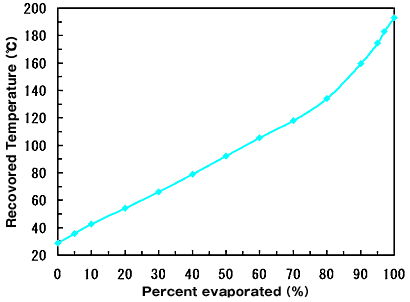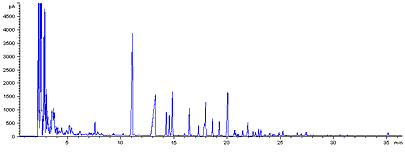Oil Analysis(What are the differences between gasoline, kerosene, and light oil?)
Oil-related products, such as gasoline, kerosene, and light oil, which have deep roots in the culture of Japan, are classified in detail for the purpose of customs duties. The products are classified by their fractional distillation properties (percentage of distillation at certain oil heating temperature) and flash point (ignition temperature).
Classification of oil-related products
The oil-related products are mixtures of two groups "aliphatic hydrocarbons" and "aromatic hydrocarbons." For the purposes of customs duties, (1) A product containing aromatic carbons (benzene, toluene, xylene, etc.) amounting to less than 50% of the total weight is classified as an oil-related product. (2) A product containing aromatic carbons 50% or greater of the total weight is not so classified.
Gasoline sold at gas stations is usually classified as an oil-related product because aromatic hydrocarbons account for less than 50% of the total weight.
[ Measuring the distillation properties: ]
This is an automatic distiller for checking the distillation properties of gasoline, kerosene, and light oil.

Automatic distiller

1. Prepare a specimen.


2. When the specimen is heated in the distiller, gasification is accelerated occurs at a certain temperature.

3. Cooling with water returns the gas to a liquid state. Measuring the quantity of the liquid and its temperature clarifies the distillation properties.
Let's look at the test data.

Gasoline distillation curve
[ For checking aromatic components: ]
Analytical equipment called a gas chromatograph is used. Each component can be separated by gas chromatography and its amount (ratio) can be calculated from the size of the peak on the chart.

Results of gas chromatograph measurements
- Electron Microscope (Aluminum oxide or artificial corundum?)
- DNA Analysis (Determining the species of tuna)
- Textile Analysis (Natural or chemical fiber?)
- Comonomer unit wt% Measurement (Copolymer or not?)
- Salt Analysis (Checking the elements in salt)
- Oil Analysis (What are the differences between gasoline, kerosene, and light oil?)
- Rubber Test (Plastic or synthetic rubber?)
![]()
Major Analytical Equipment: Introduction of equipment and devices used for analyses
